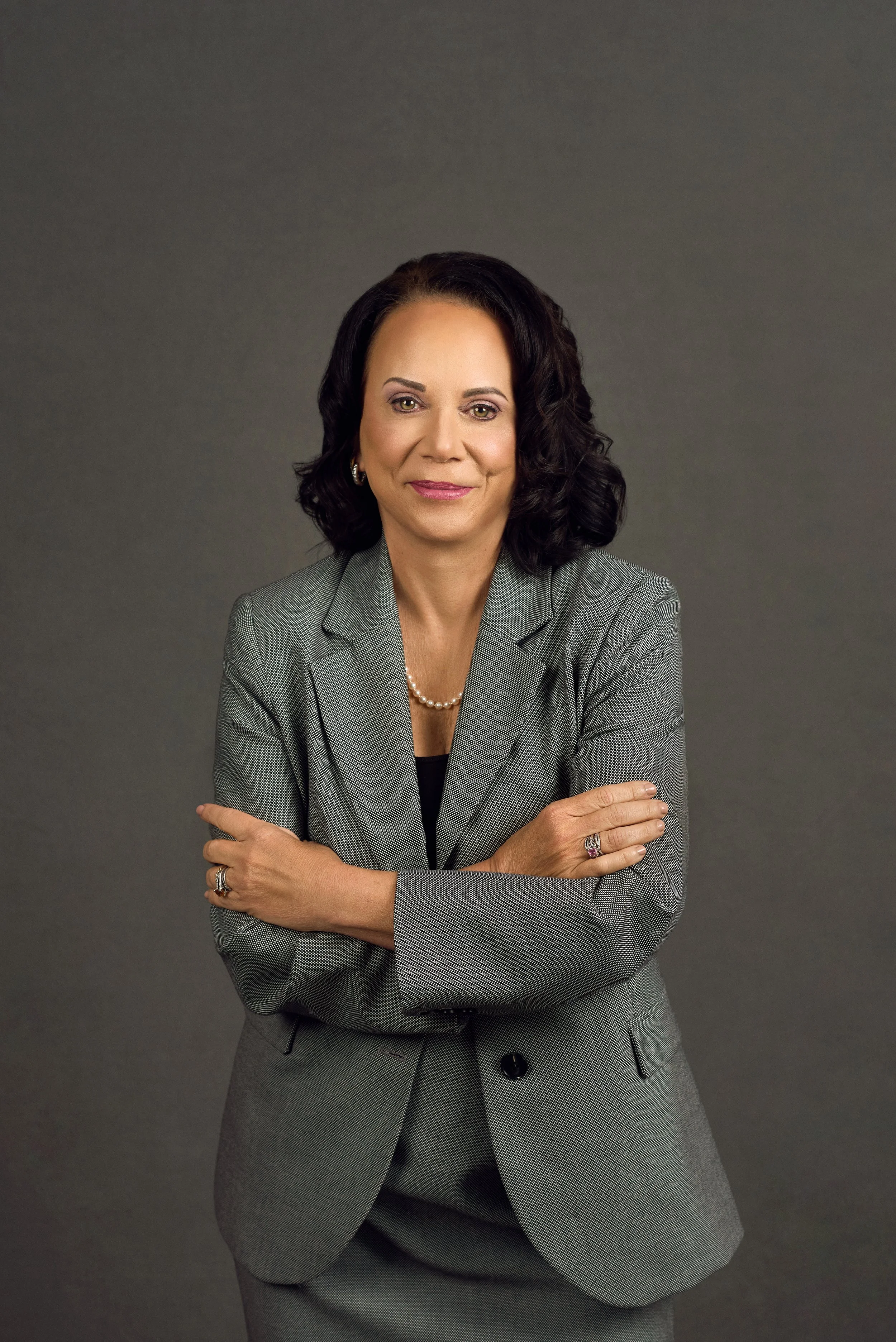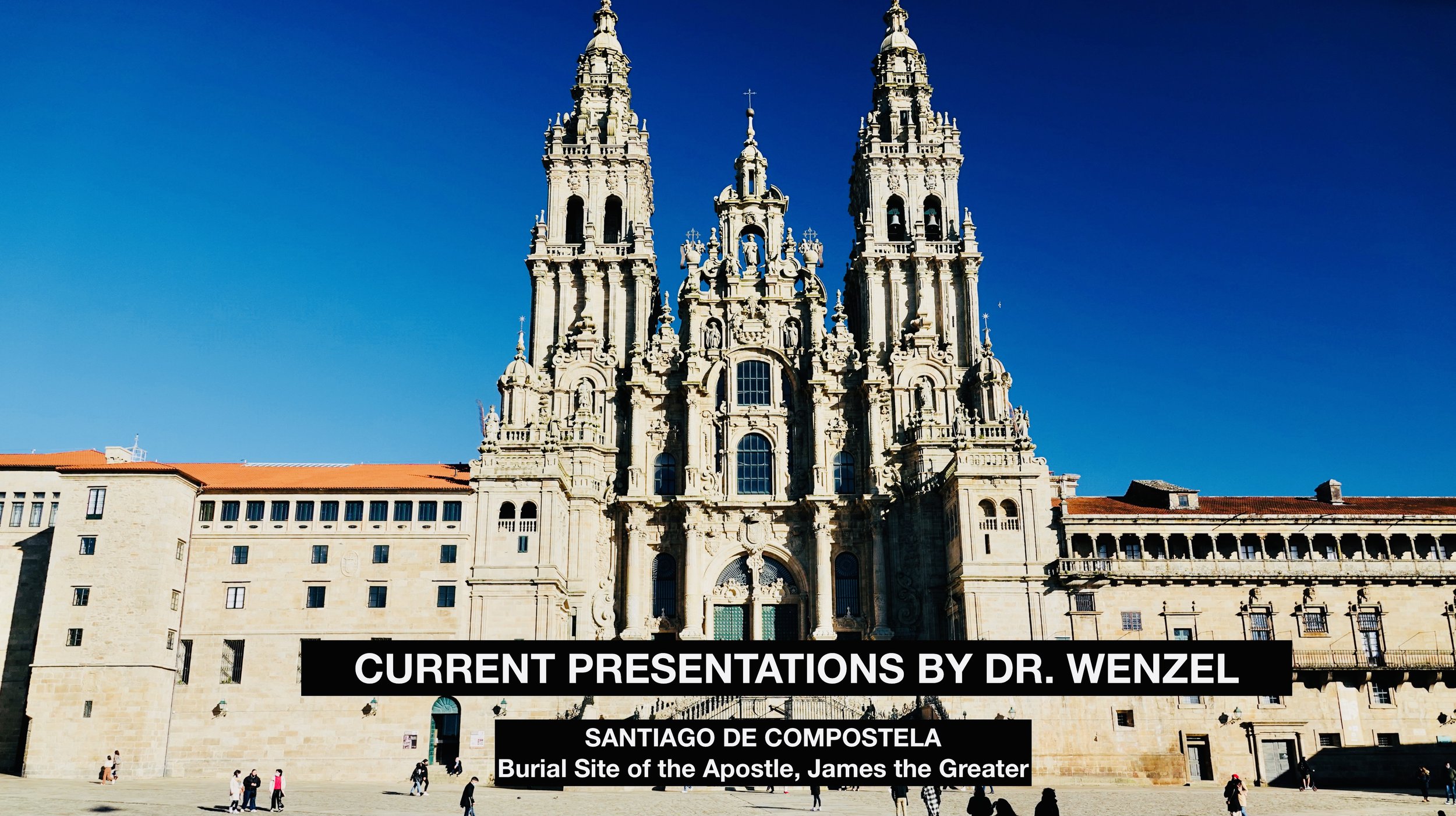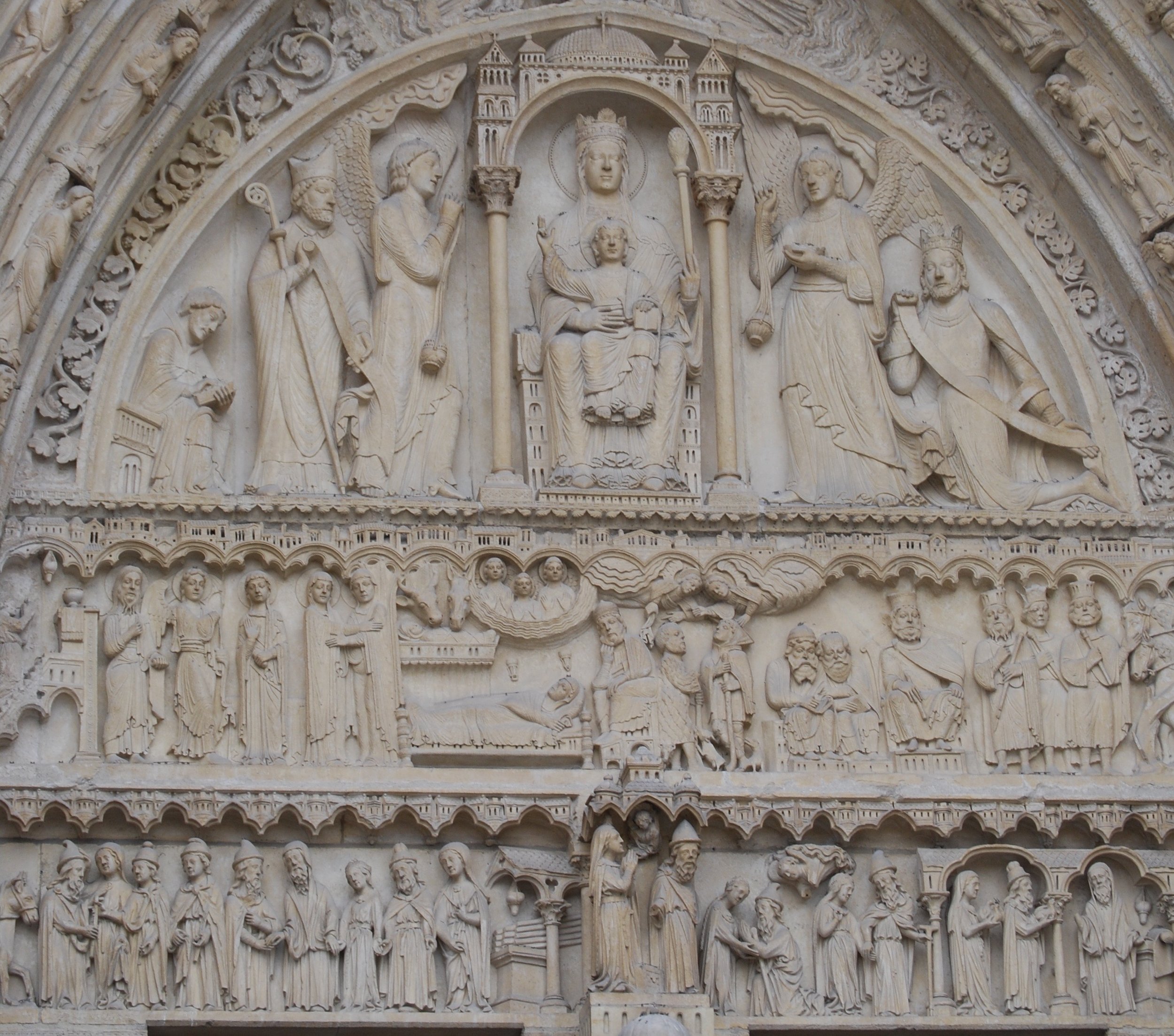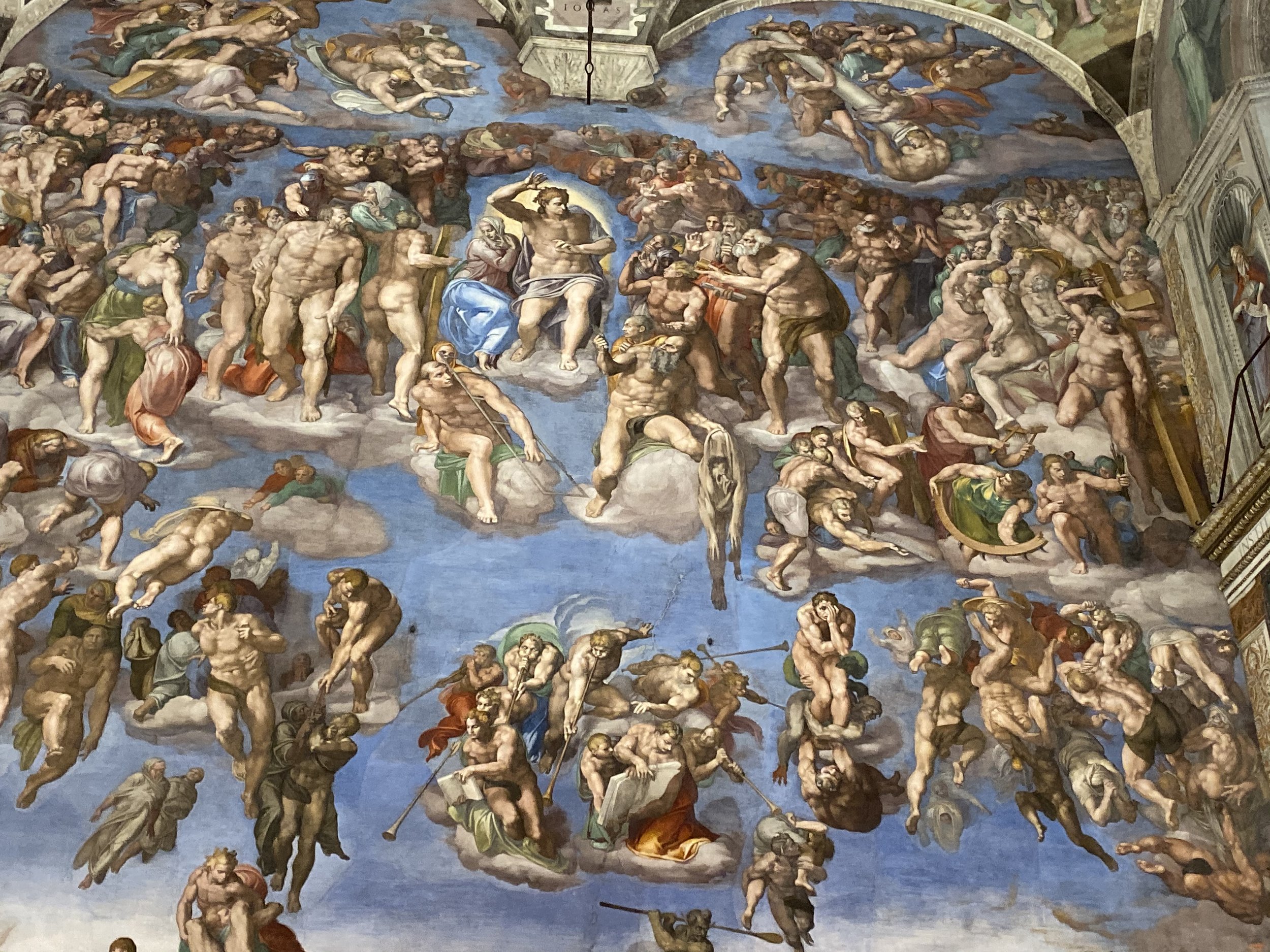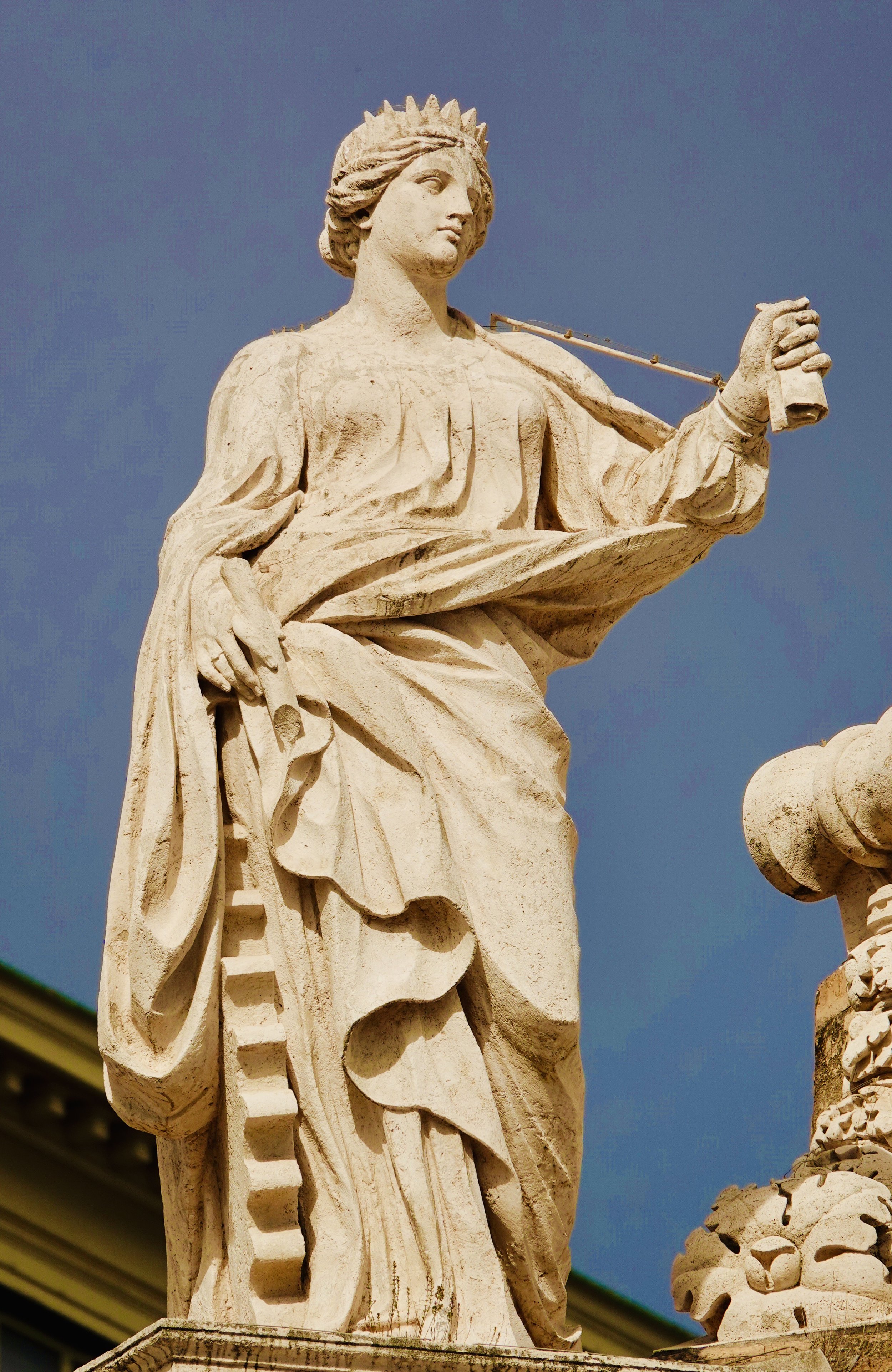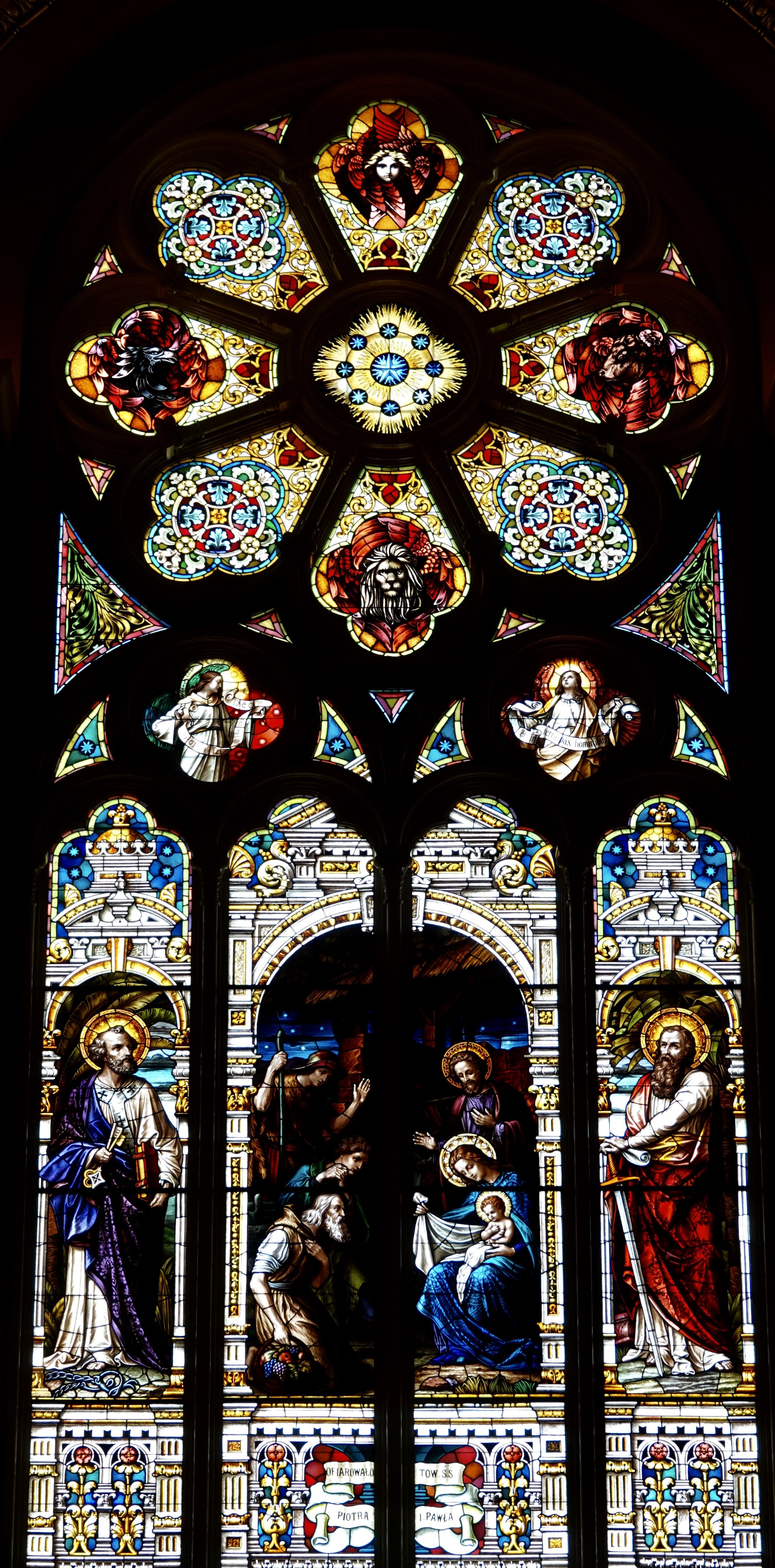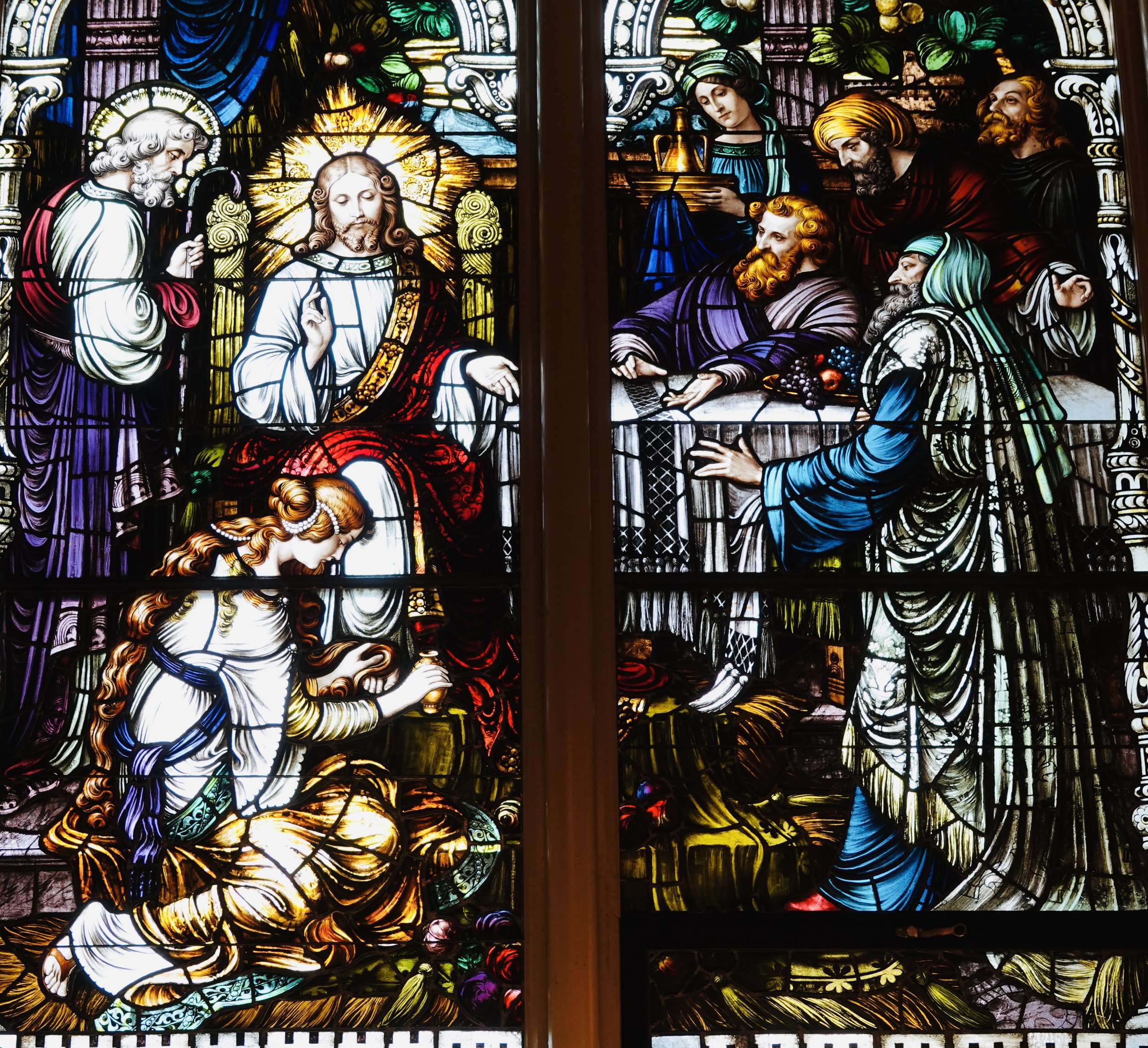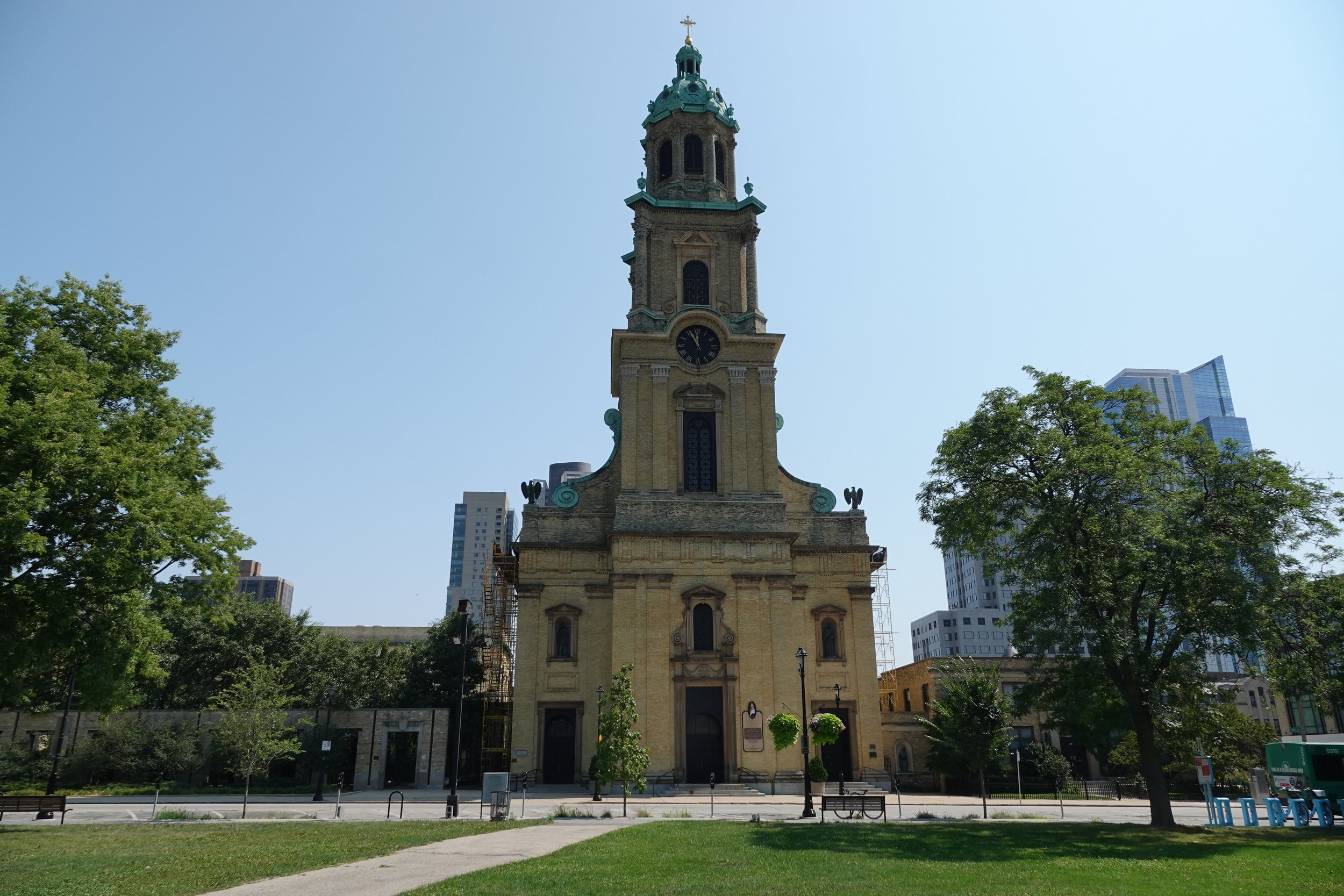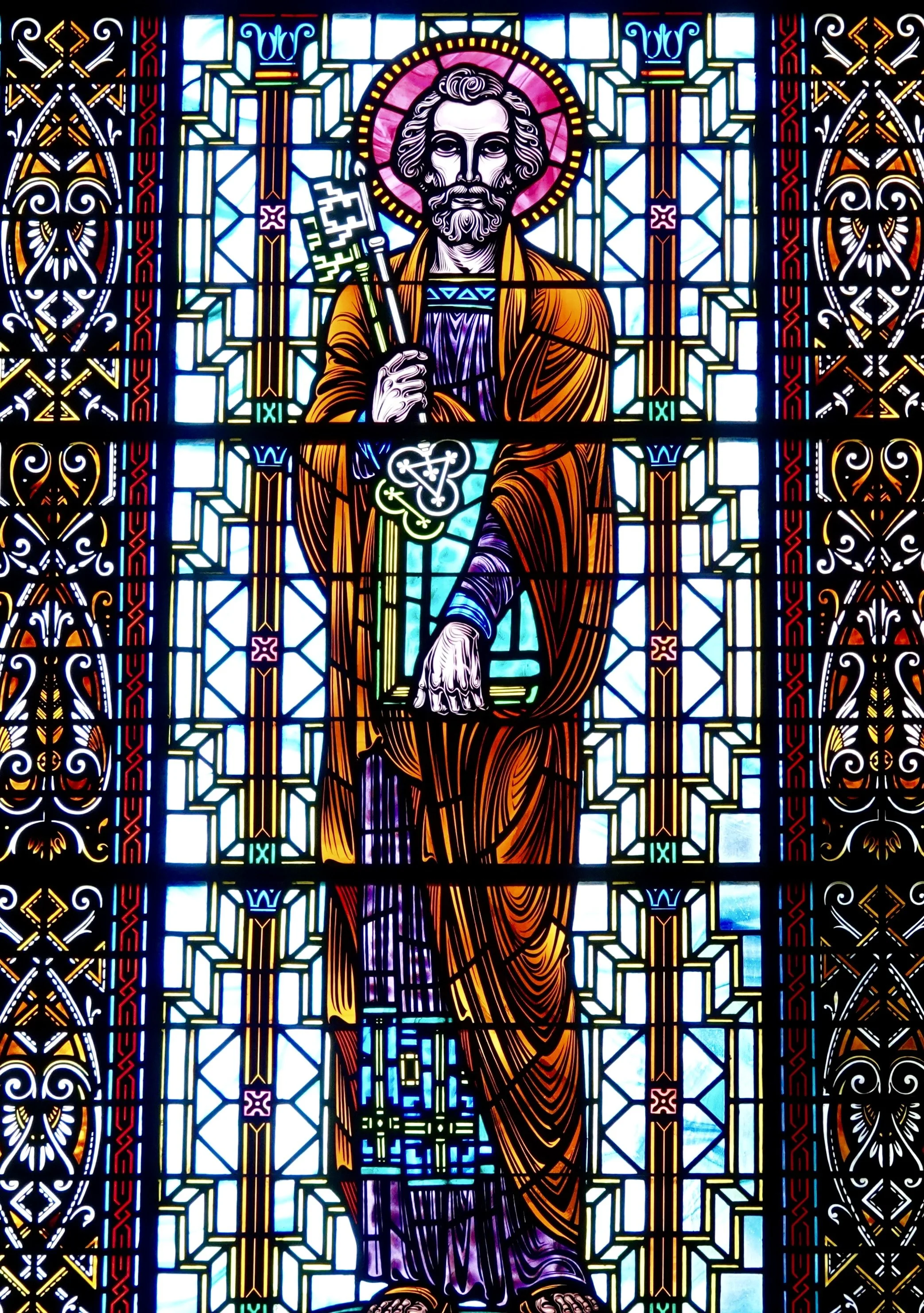
Dr. Lorrie Wenzel is a professor, author, church historian, and a former faculty member in the Religious Studies department at Cardinal Stritch University in Milwaukee, Wisconsin. She has traveled throughout Europe, studying over 300 churches. In March 2023, she published a book entitled CATHEDRALS: Clues to Identifying Biblical Figures in Cathedrals Around the World. The photographs on this page and in her recently published book were taken by her husband, Dr. Mark Wenzel, on their trips to over three hundred cathedrals and churches in Spain, France, Germany, the Czech Republic, England, Hungary, Austria, and Italy. An energetic speaker, she regularly lectures about medieval art and cathedrals across the United States.
Dr. Wenzel presents at libraries, senior living communities, women’s clubs, churches, and a variety of organizations. Her 45-minute PowerPoint Presentations and descriptions are listed below. If you are interested in booking Dr. Wenzel for a public speaking engagement, please contact her through the link above.
Below are some short videos on YouTube helping identify biblical figures in Cathedrals around the world.
Please subscribe to Lorrie Wenzel to see all the informative videos!
CATHEDRALS
CLUES TO IDENTIFYING BIBLICAL FIGURES IN CATHEDRALS AROUND THE WORLD
Have you ever stood before a statue in a cathedral and tried to guess its identity? Have you wandered aimlessly through churches, overwhelmed by the imagery and left frustrated? This book will help you identify the biblical figures in cathedrals around the world. A great tool for any traveler, it unlocks the artistic clues the great painters, sculptors, and glassmakers provided to identify important biblical characters and early Christian saints. Its purpose is to guide visitors globally through any cathedral and enable recognition of saints and martyrs in works of art. A helpful quick guide in the book ensures a speedy ready reference for the most popular figures in cathedrals.
This book began as a series of presentations on individual cathedrals. People asked if I would write something to help them remember the detailed information they heard in my lectures. Three years, eight countries, and three hundred churches and cathedrals later, the task is completed. Below are a few picture collages from the book.
MARY MAGDALENE & JAR
THE APOSTLE THOMAS
VERONICA & FACE OF CHRIST
Cathedrals: Clues to Identifying Biblical Figures in Cathedrals Around the World.
60 Minute PowerPoint Presentation
Brief description: More than ten million people visit cathedrals in Western Europe annually. The architecture and artistry are breathtaking. Paintings, statues, and stained glass fill those in their presence with awe and a sense of sanctity. Overwhelmed by the enormity and magnificence of most cathedrals, visitors often struggle to resurrect the stories from the Bible. The art in cathedrals convey stories, which were initially intended to educate and inspire an illiterate population. Each religious figure has a universal identifying mark, so the faithful were able to recognize them on sight without a need to read their names. More importantly, each figure is displayed with nearly identical markings in every cathedral. Moses is seen with a burning bush, Noah is surrounded by a rainbow, and David has Goliath’s head in his hand. Artists used symbols and visual cues in cathedral art to tell stories so the people could see and touch the Bible stories. The purpose of this presentation is to help people identify biblical figures and Christian martyrs in any cathedral around the world.
SAINT MARY CATHEDRAL, BURGOS, SPAIN
If these walls could talk—the stories of the Notre Dame Cathedral
60-Minute PowerPoint Presentation
Notre Dame Cathedral, PARIS—2011
Brief description: The Notre Dame Cathedral is much more than a place to gather and pray. Its original purpose was to instruct the illiterate public on the Bible stories through the sculptures, stained glass windows, and paintings. Children were encouraged to run their hands around the building and touch the great saints like St. Peter and St. Paul. Every part of the cathedral was meant to change your heart and turn it towards God.
Through a PowerPoint presentation and lecture, Dr. Lorrie Wenzel will share the art and imagery, the stories over the years, and the future the cathedral faces after the recent fire. What is lost and what is able to be salvaged? Having spent over 50 hours in Notre Dame Cathedral, she has a unique perspective on its artistry and importance to the French and travelers from all over the world.
INSIDE NOTRE DAME CATHEDRAL BEFORE THE FIRE, PARIS- 2017
RESTORING THE NOTRE DAME CATHEDRAL, Paris—2022
The APOSTLE THOMAS WITH THE RISEN JESUS, NOTRE DAME CATHEDRAL, PARIS-2011
THE MAGI BEFORE MARY, NOTRE DAME CATHEDRAL, PARIS-2011
THE SOUTH ROSE WINDOW, NOTRE DAME CATHEDRAL PARIS—2015
THE DOORWAY OF THE VIRGIN MARY, NOTRE DAME CATHEDRAL, PARIS 2010
The Handprint of Michelangelo on the
Sistine Chapel
60- Minute PowerPoint Presentation
Brief Description: Each year, over five million people visit the Sistine Chapel. It was built in 1473 under the direction of Pope Sixtus IV. Upon its completion, he commissioned a team of talented Renaissance artists to create a series of paintings on the walls depicting both the Life of Christ and the Life of Moses. In 1505, determined to update the space, Pope Julius II ordered Michelangelo to fresco the ceiling. Hoping to escape the task, Michelangelo fled by horse to Florence, but the relentless pope followed and forced him to return to Rome. Along with a handful of assistants, Michelangelo covered the 3000 square foot ceiling with over 150 pictorial units and 300 figures. Thirty years later, Michelangelo painted the Last Judgment on the eastern wall.
Through a PowerPoint presentation and lecture, Dr. Wenzel will identify the biblical stories that saturate the Sistine Chapel. The pictures in the presentation were taken during a private tour in 2019.
THE SISTINE CHAPEL CEILING PAINTING BY MICHELANGELO, VATICAN CITY, ITALY
THE LAST JUDGEMENT PAINTING BY MICHELANGELO INSIDE THE SISTINE CHAPEL, VATICAN CITY, ITALY
THE MAN WHO CRITICIZED MICHELANGELO’S WORK, FOREVER DEMONIZED
THE SISTINE CHAPEL, VATICAN CITY, ITALY
CATHERINE OF ALEXANDRIA, BLAISE, STEPHEN AND SIMON
THE SISTINE CHAPEL, VATICAN CITY, ITALY
St. Peter’s Basilica
60-Minute PowerPoint Presentation
Brief Description: St. Peter’s Basilica is located just outside the Vatican walls in Rome. It is the largest church (it’s not a cathedral) ever built and is free to visit. This lecture focuses on the history and religious art inside and around the basilica.
St Peter’s Basilica was the most extraordinary and costly undertaking of the Renaissance. Spanning over one hundred years between 1505 and 1667, the building consumed the talents of Michelangelo, Raphael, and Bernini. What began as a sign of hopeful unity under Pope Julius II led to the Protestant Reformation, the Sack of Rome, and a divided Church.
Inside the basilica, the magnificent artwork is infused with theological significance. Veronica, Andrew, Helen, and Longinus stand on the four pillars sustaining the dome. The gospel writers rest on their symbols of a lion, an eagle, an ox, and an angel. St. Peter, crucified, hangs upside down. With the help of 70 winches, 907 men, and 145 horses, the 320-ton Egyptian obelisk was moved to its home in front of the basilica in 1586. Bernini’s contribution was the magnificent Chair of Peter and the outside colonnade, which holds 140 statues. His failure was that he was unable to finish a bell tower.
This presentation will help you identify and appreciate the treasures within St. Peter’s Basilica and the renowned artists who created its beauty. Come and hear the stories of the monumental undertaking of this sacred space, which draw 5 million visitors a year!
JONAH & THE WHALE
JUDITH & HOLOFERNES’ HEAD
DANIEL IN THE LION’S DEN
THE COLONNADE OF SAINT STATUES, ST PETER’S BASILICA-2022
THE COLONNADE OF SAINT STATUES, ST. PETER’S BASILICA-2022
AGNES THE MARTYR
John the Baptist
CATHERINE OF ALEXANDRIA
SLIDESHOW OF PICTURES FROM EUROPEAN CATHEDRALS
Visit Milwaukee Churches! Here are some of my favorites!
Many Milwaukee Churches have beautiful stained-glass images of the saints and martyrs. You don’t have to go to Europe to see biblical heroes etched in marble and glass. During DOORS OPEN-MILWAUKEE, the ones listed below are open. The churches also welcome visitors. (Pictured above is St. Josaphat’s Basilica located at 2333. S. 6th Street, Milwaukee).
St. Josaphat’s Basilica
St. Josaphat’s Basilica is filled with beautiful imagery in stained glass and painting of the early Christians saints and heroes. The inside facade mimics basilicas you will find in Europe. The picture on the left is unique in that it has several different biblical images. The top rose window has the images of the four gospel writers, Matthew (an angelic man), Mark, (an winged lion), Luke (a winged ox) and John (an eagle). Flanking the nativity of Jesus is Peter, holding the keys to heaven and Paul holding a sword to remind us of his martyrdom. Paul was beheaded.
The picture below illustrates the story from Luke 7:36-40 “When one of the Pharisees invited Jesus to have dinner with him, he went to the Pharisee’s house and reclined at the table. A woman in that town who lived a sinful life learned that Jesus was eating at the Pharisee’s house, so she came there with an alabaster jar of perfume. As she stood behind him at his feet weeping, she began to wet his feet with her tears. Then she wiped them with her hair, kissed them and poured perfume on them.
When the Pharisee who had invited him saw this, he said to himself, “If this man were a prophet, he would know who is touching him and what kind of woman she is—that she is a sinner.”
Jesus answered him, “Simon, I have something to tell you.”…
ST. PAUL’S EPISCOPAL CHURCH
St. Paul’s Episcopal Church has more stained-glass than any other church in Wisconsin. It is located at 914 E. Knapp Street in Milwaukee. The center image on the right is the resurrection appearance to the women. On the far right is Mary the mother of Jesus comforted by the Apostle John.
“Christ Leaving the Praetorium” is the largest religious Tiffany stained glass in the world. (1884)
IMMANUEL PRESBYTERIAN CHURCH
1100 N. Astor Street in downtown Milwaukee is filled with beautiful stained glass imagery. On the right, Jesus the Good Shepherd.
Jesus blessing the children on the right, Above: Dorcas (or Tabitha) in Acts. 9:36-42 was devoted to good works and charity.
ST. JOHN’S ON THE HILLSIDE
St. John’s Evangelical Lutheran Church on the Hillside is located at 804 W. Vliet Street in downtown Milwaukee. The community is nearly 175 years old. The altar above is flanked by Peter holding the keys to heaven and Paul hold a sword to remind us that he was beheaded for his refusal to abandon his faith in Christ.
St. John’s on the Hillside has the images of the four evangelist pictured above with their symbols, Matthew with an angel, Mark with a winged lion, Luke with a winged ox and John with an eagle.
ST. JOHN’S CATHEDRAL
LOCATED at 812 N. Jackson Street in downtown Milwaukee. The church has all 12 Apostles etched in stained glass. If you want to learn the visual name tags of the 12, this is a great starting point.
The Apostle Andrew holding his X shaped cross.
The Apostle Simon holding his saw.
The Apostle Peter holding the keys to heaven and earth.
The Apostle James the Greater marked with a scalloped shell.


